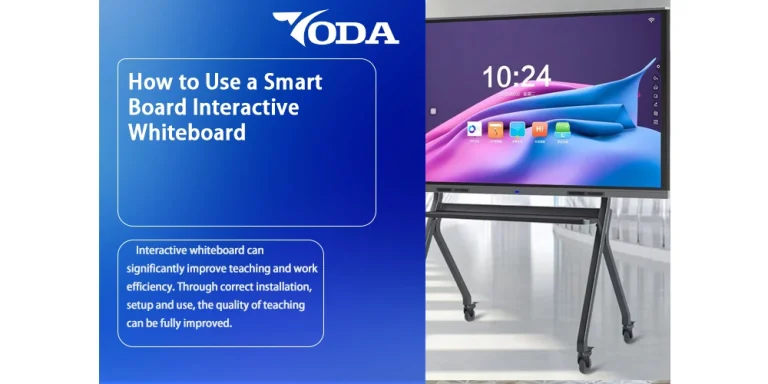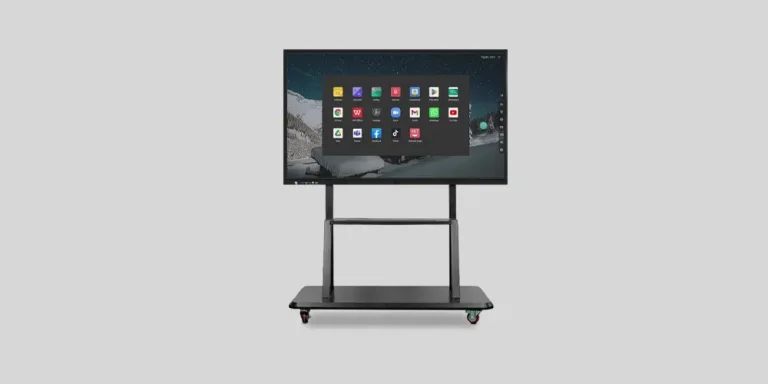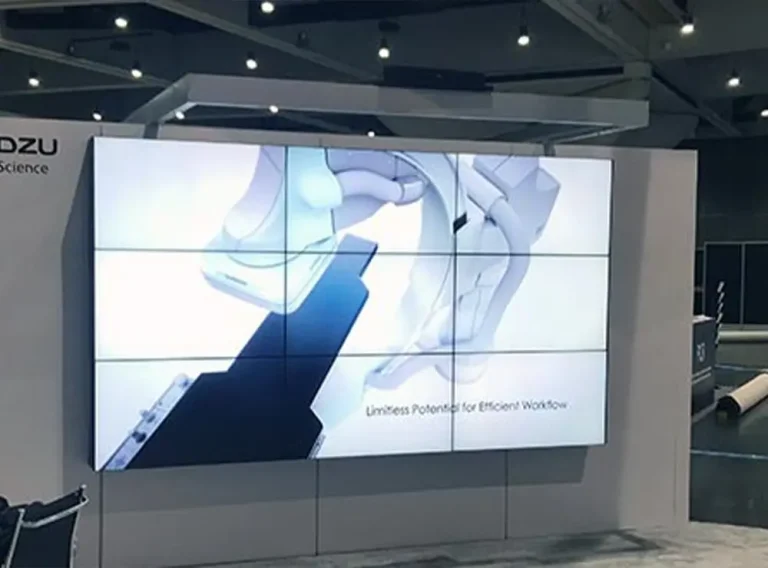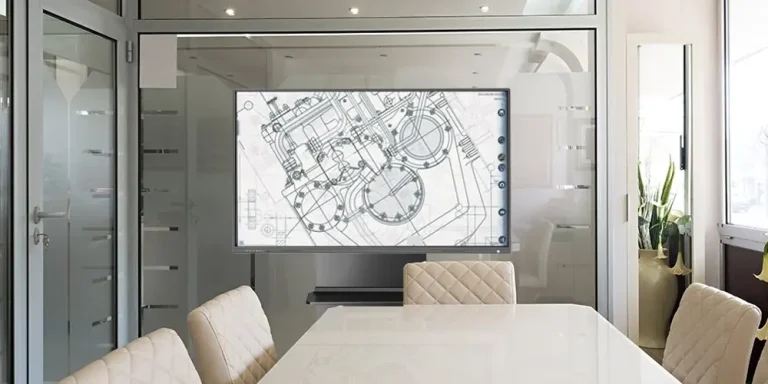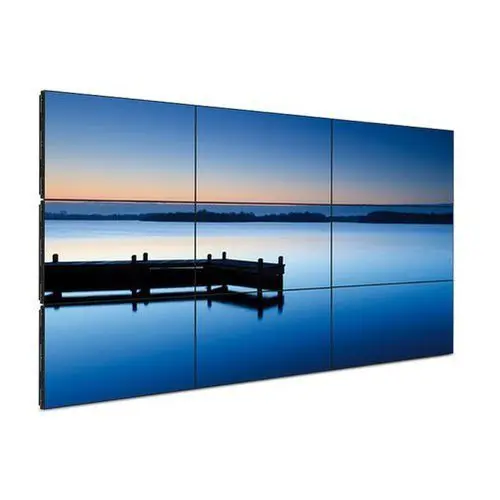
What is the difference between a TV and a video wall?
Author:Yoda . 5/9/2025
Today, with the growing demand for digital display, many companies are often confused between “ordinary TV” and “video wall” when choosing large-screen display devices. As a brand deeply involved in the field of LCD splicing screens, Yoda will use this article to comprehensively analyze the differences between the two from the dimensions of technical principles, application scenarios, installation and maintenance, to help you make more accurate decisions.
Basic definition: the core difference between TV and video wall
1. TV
TV is based on a single-screen independent display, and the size is usually between 32-98 inches, mainly for home entertainment scenes. Its design focuses on color performance, audio and video functions and user interactive experience, but it is limited by the single-screen structure and cannot expand the display area or achieve special-shaped layouts through splicing. In addition, the brightness and durability of ordinary TVs are usually difficult to meet the needs of high-intensity commercial scenes.
2. Video Wall
A video wall is a display system composed of multiple LCD splicing screens (such as Yoda’s 55-inch ultra-narrow bezel screen) through a professional image controller. Its core advantage lies in modular expansion capability – users can freely arrange screens according to space requirements (such as 2×2, 3×3 or arc splicing) to achieve coverage from a few square meters to the entire wall. At the same time, the video wall adopts industrial-grade panels and heat dissipation design, supports 7×24 hours of continuous operation, and is equipped with multi-screen brightness/color synchronization technology to ensure the overall consistency of the picture.

Technical differences: Why is the video wall more suitable for professional scenes?
1. Seam control technology
The border width of ordinary TVs is usually more than 10mm. If forced splicing, it will form a clear sense of visual fragmentation. Professional-grade video wall screens (such as Yoda’s 0.88mm ultra-narrow splicing series) use LED backlight compensation algorithms to minimize the black edge effect after splicing multiple screens, and almost achieve a “seamless” display effect, which is especially suitable for data visualization scenes that require high integrity.
2. Brightness and color management
The brightness range of TV is usually 300-500 nits, and it lacks the ability to coordinate multi-screen adjustments. Color difference is prone to occur after long-term use. In contrast, video walls support unified brightness calibration (such as Yoda’s intelligent light sensing system), and can maintain a high-brightness output of more than 700 nits even in strong light environments such as shopping malls and exhibition halls, and eliminate color deviations between multiple screens through real-time color temperature compensation technology.
3. Image processing and signal distribution
The core competitiveness of the video wall is also reflected in its professional image processing engine. Through a distributed controller, the video wall can simultaneously access and process multiple signal sources (such as HDMI, SDI, IP streams, etc.), and realize complex operations such as split-screen display, screen roaming, and superimposed annotations. For example, in a security monitoring center, a single set of video walls can display hundreds of camera images at the same time, and support cross-screen zooming and real-time playback of any window, while ordinary TVs can only display single signal content.
Application scenario comparison: How to choose the best solution?
1. Applicable scenarios of TV
2. The irreplaceability of video wall
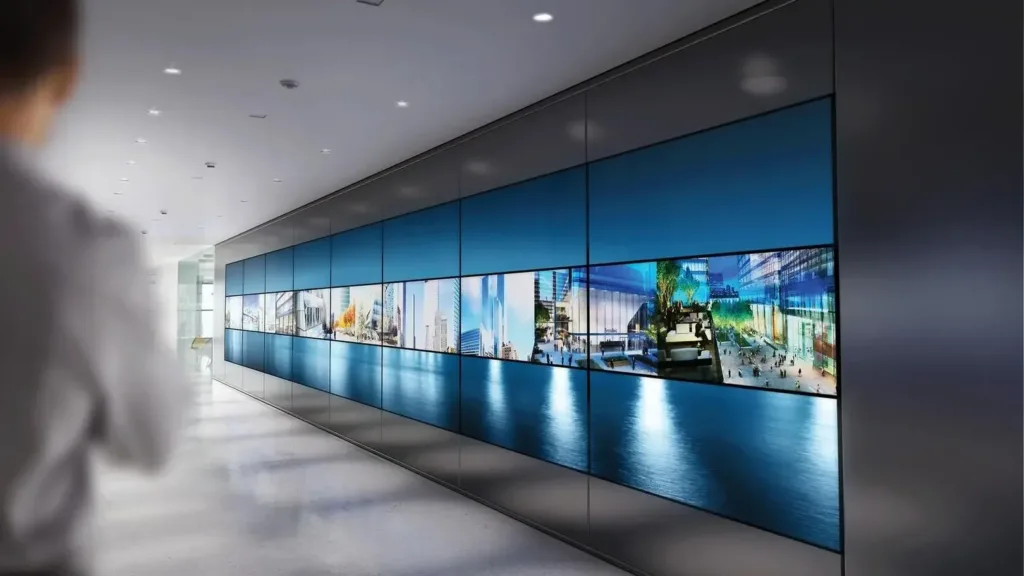
Cost and maintenance: rational considerations for long-term investment
1. Initial investment cost
The unit price of ordinary TVs is relatively low (about $500-$3000), but if large-size coverage is required, multiple TVs need to be purchased and installed in parallel, which may lead to complex wiring and visual fragmentation. The video wall adopts a modular design. Although it needs to invest in splicing screens, controllers and installation services in the early stage, the unit area cost is significantly reduced as the scale expands, and it can achieve truly seamless integrated display.
2. Long-term operating costs
The average life of a TV is about 50,000 hours (about 5-6 years), and the failure rate is superimposed when multiple screens are deployed, and the maintenance cost is high. The video wall uses industrial-grade panels (lifespan exceeds 100,000 hours) and supports single-screen hot-swap maintenance (such as Yoda’s patented redundant power supply design), which can replace faulty units without interrupting the overall display, greatly reducing downtime losses.
How to choose a reliable video wall supplier?
1. Technical parameter verification
2. System compatibility test
Ensure that the video wall controller supports mainstream signal formats (such as 4K@60Hz, HDR) and can be seamlessly connected to existing IT/security systems.
3. After-sales service capabilities
Give priority to brands that provide global rapid response services (such as Yoda’s 48-hour door-to-door service), and confirm whether remote diagnosis, spare parts reserves and other support are provided.
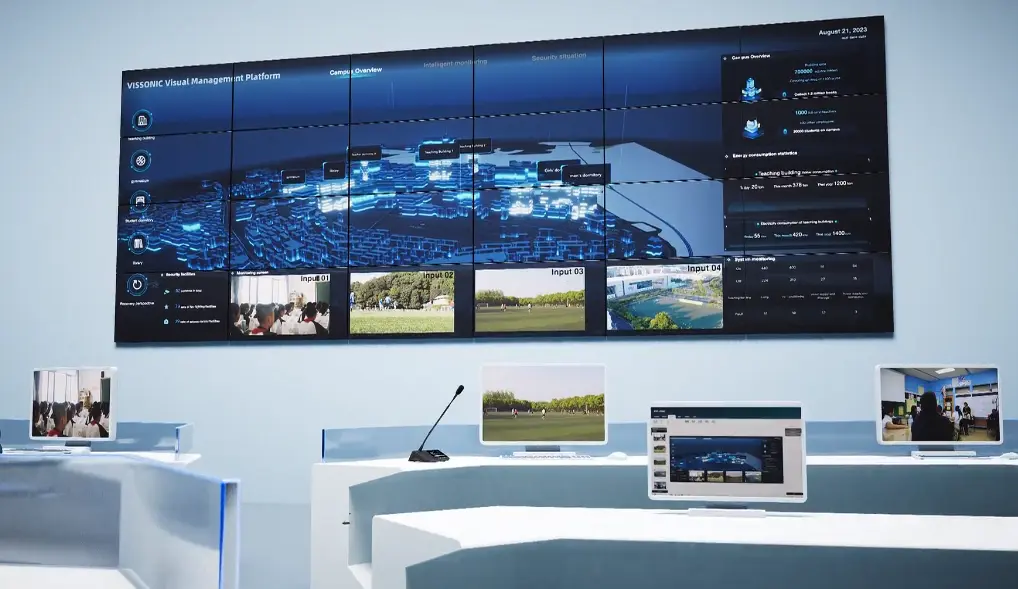
Three reasons for choosing Yoda video wall
1. Technological leadership
2. Full-cycle service support
3. Scenario customization capabilities
Conclusion: Video Wall – the ultimate solution in the field of commercial display
The evolution from single-screen TV to modular video wall is essentially a redefinition of “space value” and “information density”. Whether it is real-time flight scheduling in airport terminals or data command centers at corporate headquarters, video walls can become the core infrastructure of digital transformation through high reliability, flexible scalability and immersive visual experience.
As a brand that has been focusing on LCD splicing screen technology for ten years, Yoda has always taken “breaking the boundaries of display” as its mission to provide global customers with one-stop video wall solutions from hardware customization, software debugging to operation and maintenance support. If you are planning a commercial display upgrade project, please contact Yoda’s technical team to get a customized design and quotation!


